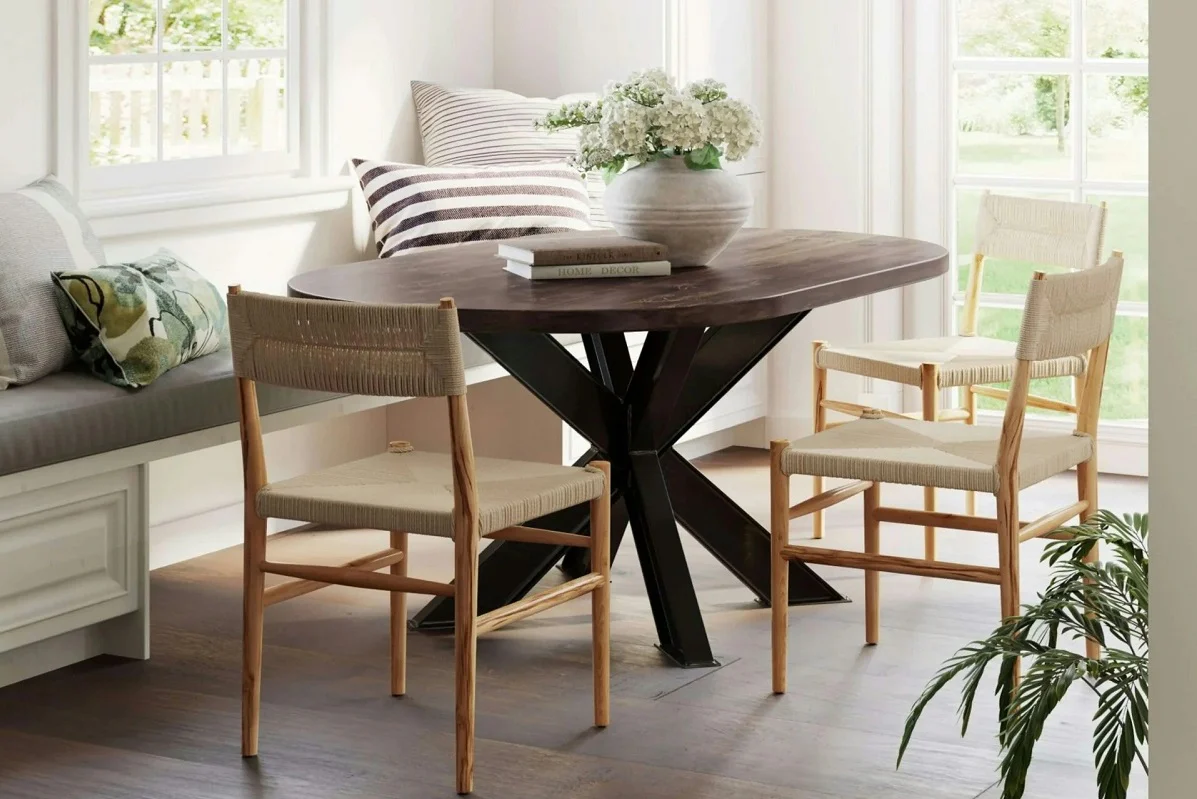Dining chairs are not just for practical seating; they are key components to combine style, comfort, and functionality in your home! Dining chairs, whether for a formal dinner party or casual dinner with the family, can complete a dining room in terms of appeal and experience. But picking and keeping these things is a therapy of its own, so here are plenty of things to deal with, from materials and ergonomic design choices to cleaning needs and storage solutions.
With urban homes tending to be small, and chairs often being one of the most disposable forms of furniture, today’s consumers are balancing the desire to find a chair that aligns with their interior design with the knowledge that it will need to be used effectively on a daily basis. This all-inclusive guide will take you through everything you need to know about selecting dining chairs, from materials selection to maintenance tips and more space-saving solutions. You’ll learn practical tips on the maintenance of your chairs to keep them looking fresh and inviting, as well as more inventive ways to make your dining area work harder for you with modular furniture solutions.
Selecting the Perfect Dining Chairs
When selecting dining chairs, the material type poses the basis for both look as well as longevity. Solid wood chairs, such as those made by CHITALIVING, are classics, and especially if made of hardwood, can last for decades. Metal frames have a contemporary elegance and are more robust, which could leave you feeling hard pressed when sitting, which requires more cushioning. Upholstered options offer softness and comfort but require more maintenance attention.
Assessing Durability for Daily Use
The best dining chairs should be able to hold 250-plus pounds and are built with reinforced joints, especially the points where the legs and back meet. Frame materials are a major factor in your longevity — aim for kiln-dried hardwood or welded metal construction. For upholstered chairs, weigh the pros and cons: leather is easy to clean and exceptionally durable, but can show scratches, whereas performance fabrics resist stains but tend to pill over time. Employ delimiter objects such as screws, dowels, and elevating equipment to check if they are well hidden, pattern the movement of all movable objects, and examine the build quality at joints.
Ergonomics become very important for daily comfort. The standard seat height for dining chairs is between 17 and 19 inches, which aligns with the 28 to 30-inch height of most dining tables. The depth of the seat should be such that users can sit flat-footed and still have back support. When working with your existing décor, think not only about the style of the dining table, but also about the overall theme of your room. Exact matches aren’t required, but be consistent in either the finish, material type, or design era to ensure a cohesive look.
Cleaning and Caring for Fabric Dining Chairs
Proper care with sustained cleaning work can elongate the existence of your fabric dining chairs while also enhancing their looks. Each fabric needs specific care – while linen requires some mild cleaning with less moisture, polyester can endure much tougher care methods. For regular care, vacuum chairs every week with an upholstery attachment to remove surface dust and debris. Treat spills promptly by blotting, never rubbing, to stop stains from sinking deeper into the fabric.
DIY Cleaning Solutions
Make a powerful natural cleaning solution: Mix 1 part white vinegar to 3 parts water. Try this mixture on a hidden spot first so you can be sure it’s colorfast. For particularly stubborn stains, make a paste of baking soda and water, apply gently to the area, allow it to dry completely, and vacuum thoroughly. And if you are someone who habitually eats on the couch, consider spraying every six months, especially on any chairs that get heavy use. This forms an invisible shield against liquid spills and facilitates future cleaning. For strong smells, sprinkle baking soda over the fabric, let it sit overnight, and vacuum clean the next day. For grease stains, sprinkle cornstarch on the spot, let it absorb the oil for a few hours, and then vacuum. Be sure to rotate chairs periodically, too, for even wear and aesthetics in your dining set.
Maximizing Space with Modular Sofas
Modular dining chairs are an intelligent choice for homes with less area dedicated to dining. These versatile pieces can be configured in various ways to suit changing spatial demands and guest numbers. Search out chairs that can fit entirely under the tabletop when not in use, or choose stackable varieties that can be stashed vertically away in a nearby closet. Bench seating on one side of the table can increase seating capacity while keeping the overall feel open.
Customization Strategies
In your dining space, experiment by using traditional chairs along with storage ottomans that pull triple duty as extra seating for logjam-type gatherings. Select slim-profile pieces and those with raised legs to achieve a visually light environment. To keep the flow rolling, allow at least 36 inches of clearance between the edge of the dining table and walls or other furniture. Choose chairs that are light-colored, and go with transparent materials like acrylic or glass to help the space feel bigger. What about drop-leaf tables with folding chairs that park along the wall when not in use, to form a flexible dining area for use as it suits your day? Add built-in bench seating with concealed storage compartments to get added practicality without compromising on design.
Mixing Chair Styles for Visual Interest
You can create an eclectic dining space without sacrificing harmony. Choose a go-to chair style that defines your dining set, then layer with accents. Pair upholstered host chairs at the ends of a table with sleek wooden side chairs and use matching wood tones or fabric patterns to keep things cohesive. You might balance a few vintage wooden chairs with some contemporary metal-frame options, maintaining a consistent height for seat comfort. Add dimension by mixing in chairs that differ in back height while matching seat size.
Make texture your through line — smooth leather-upholstered seats paired with textured fabric backs, woven rattan combined with polished wood frames, etc. When combining materials, select a color palette that links various pieces. For example, pick brass hardware details that pair with metal chair frames, or choose upholstery fabrics that reflect wood grain hues. Reposition your statement chairs — consider using larger statement chairs like armchairs with bold patterns only when that creates a natural focal point in the room without overcrowding the space. Remember, when mixing styles successfully, the key is to find commonality, whether that’s in repeated colors, similar materials, or consistent proportions.
Final Thoughts on Dining Chairs Selection and Care
Choosing and caring for the dining chairs is one of the big investments you are putting for comfort and styling of your home. The trick is finding the design that manages to balance durability, aesthetics, and functionality. With thoughtful material choices, an understanding of proper maintenance techniques, and an implementation of smart space-saving solutions, a dining area can serve your needs for many years to come. Good chairs make for good meals, whether daily or special; don’t forget that a key to longevity is proper maintenance, so quality chairs, when well cared for, become lasting pieces.
Whether you choose traditional wooden chairs, contemporary metal, or chairs with modular seating that allow efficient space usage, consideration should be given only to pieces that best suit your lifestyle yet cater to the size of your space. By following the cleaning and care strategies outlined here, you can protect your investment, and creative mixing of styles can change your dining area into a personalized space that showcases your unique sense of style. With careful choosing and regular upkeep, your dining chairs will serve you well and retain their beauty as mainstays of your home dining experience.



































